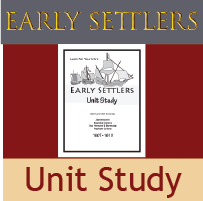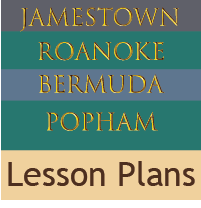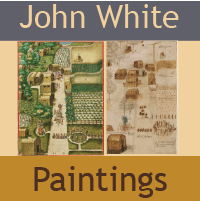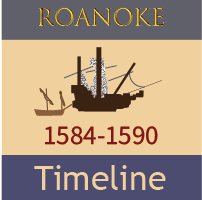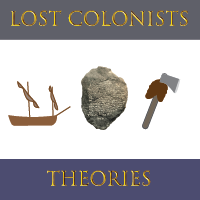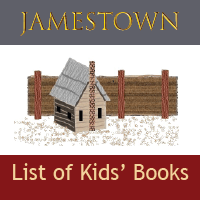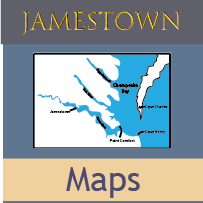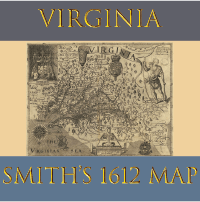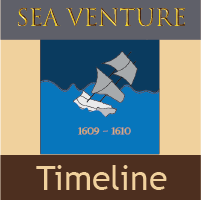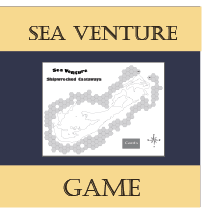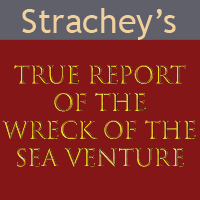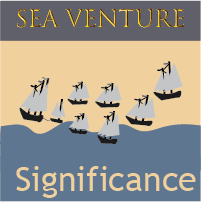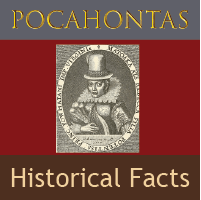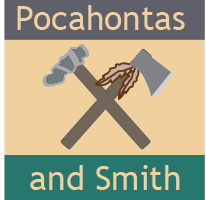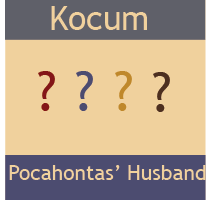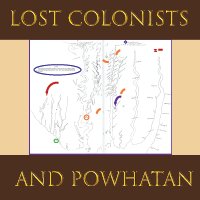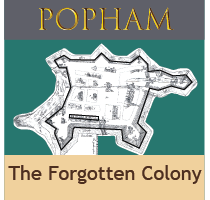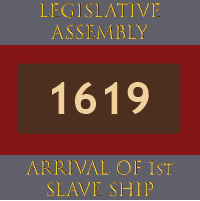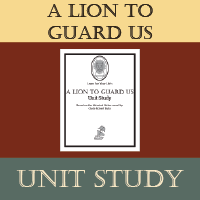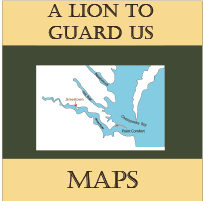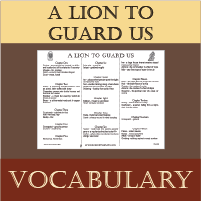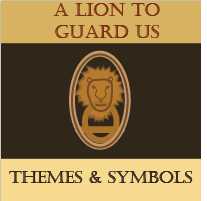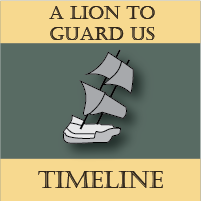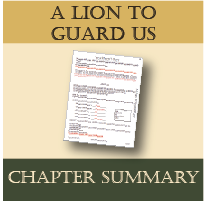Popham Colony
Exploring the forgotten colony:
Jamestown's sister colony of 1607 was known as the Popham Colony.
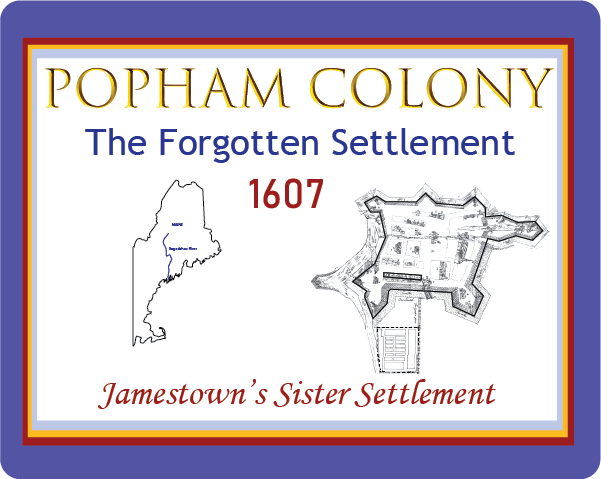
Why was there a Popham Colony?
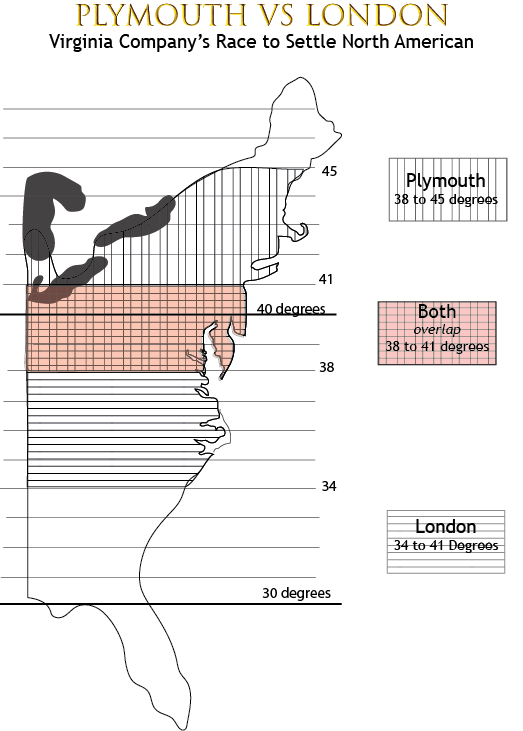
As the men in Jamestown were cutting down trees to build their famous fort, another group of settlers boarded two ships bound for the northern area. The race was on!
With 120 men on board, two ships set sail on May 31, 1607: the Gift of God and the Mary & John. Captain Robert Davies was in command of the ships. Sir George Popham was the leader of the expedition which was named after his brother still in England. His second in command was Raleigh Gilbert, named after his famous uncle Sir Walter Raleigh.1 The other 117 men included sailors, soldiers, carpenters, and farmers.
In August they arrived after a two month journey and came to the Sagadahoc River. They found a great location and started building their fort, which was named Fort St. George after England’s patron saint. Just as the Jamestowners chose the James River for the site of their fort, Popham’s crew decided to build on the Sagadahoc River. Often the colony is known as the Sagadahoc Colony for this reason. (Go ahead, say Sagadahoc Colony three times real fast.
As the map above shows, the Viginia Company of London was granted the right to colonize between 34 and 38 degrees and the Virginia Company of Plymouth had rights to land between 41 and 44 degrees. (Whoever, won the race would get the prize of claiming the land in between - 38 to 41 degrees. (Students join teams to race for the priviledge - an exercise in futility so it turned out.)
Of course, the French were further north in Canda, and Spain claimed the land that became Florida, Mexico, Central America and South America. England called dibs on the land in between.
Noticably absent, of course, was the recognition of land ownership by the natives already living in these locations. Without literacy and map-making ability, they just weren't given a place at the table.
Where Was the Popham Colony?
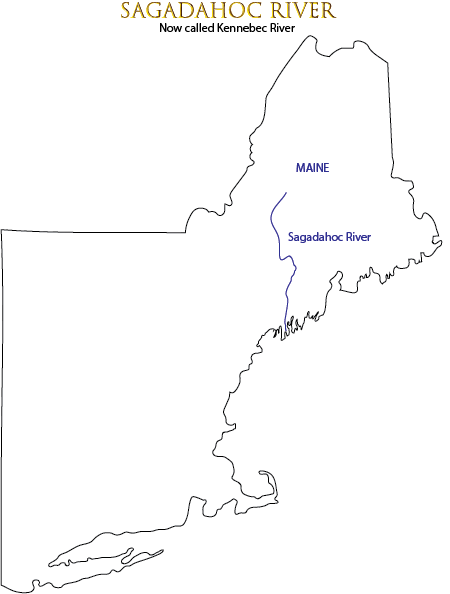
Students get to play "Pin the Fort on the River." Where on the Sagadahoc would you have built a fort?
Here's a hint to find it on a US map: The famous curved peninsula of Massachusetts points straight up to the Popham Colony.
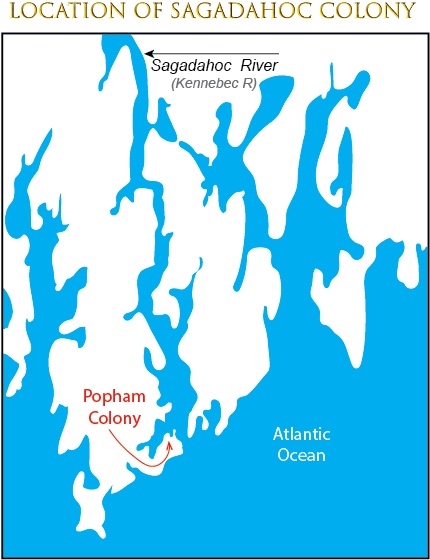
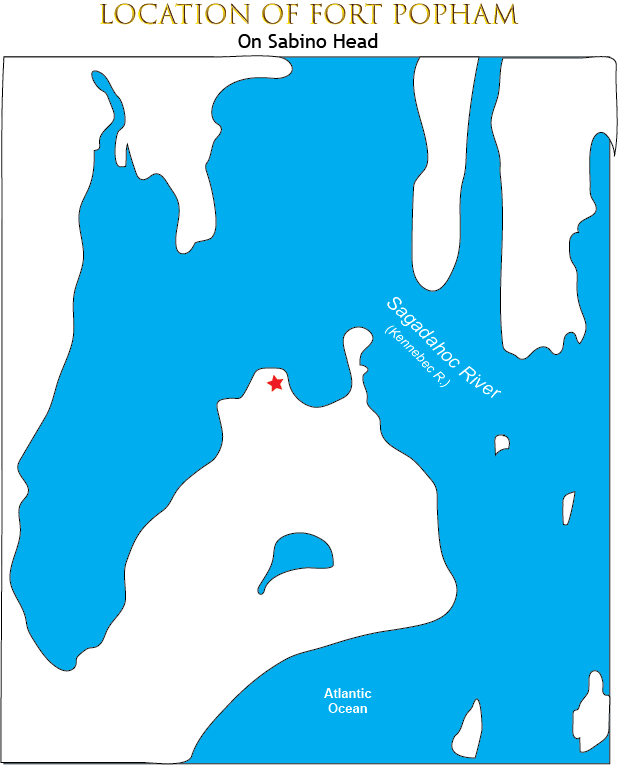
What is John Hunt's Map?
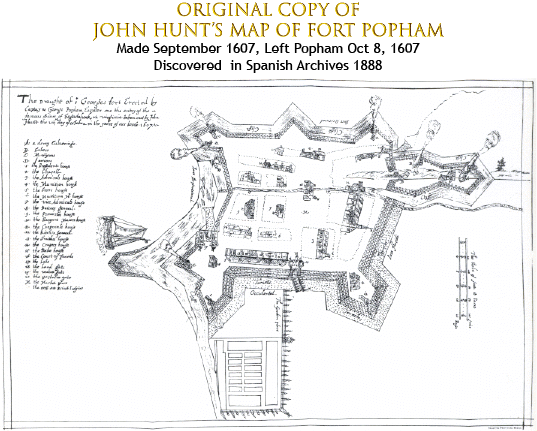
In 1888 a detailed drawing of Popham Colony was discovered. The bay helped narrow down the fort's location. But was the map accurate?
One hundred years later, an archaeology team led demonstrated it's accuracy.
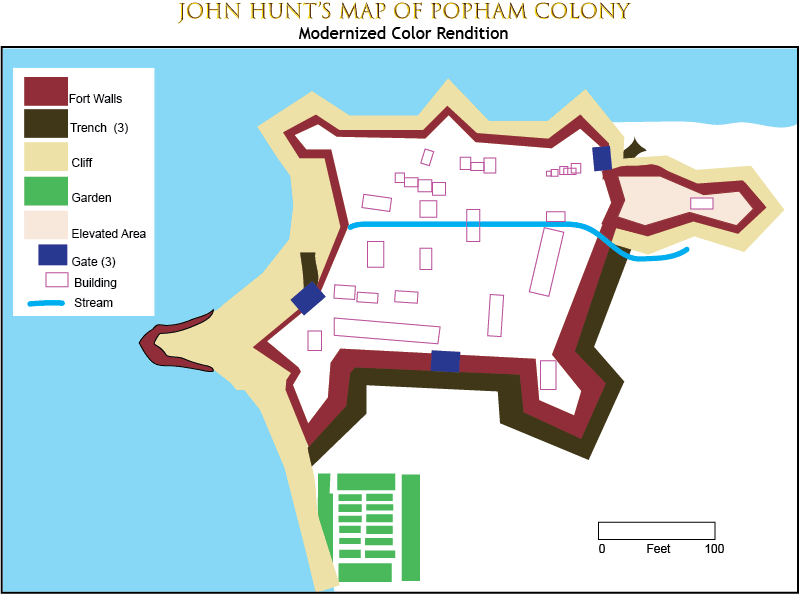
The colorized map is a modernized version of Hunt's map, showing walls, ditches, and the elevated area.
Where was the fort located on Sabino Head?
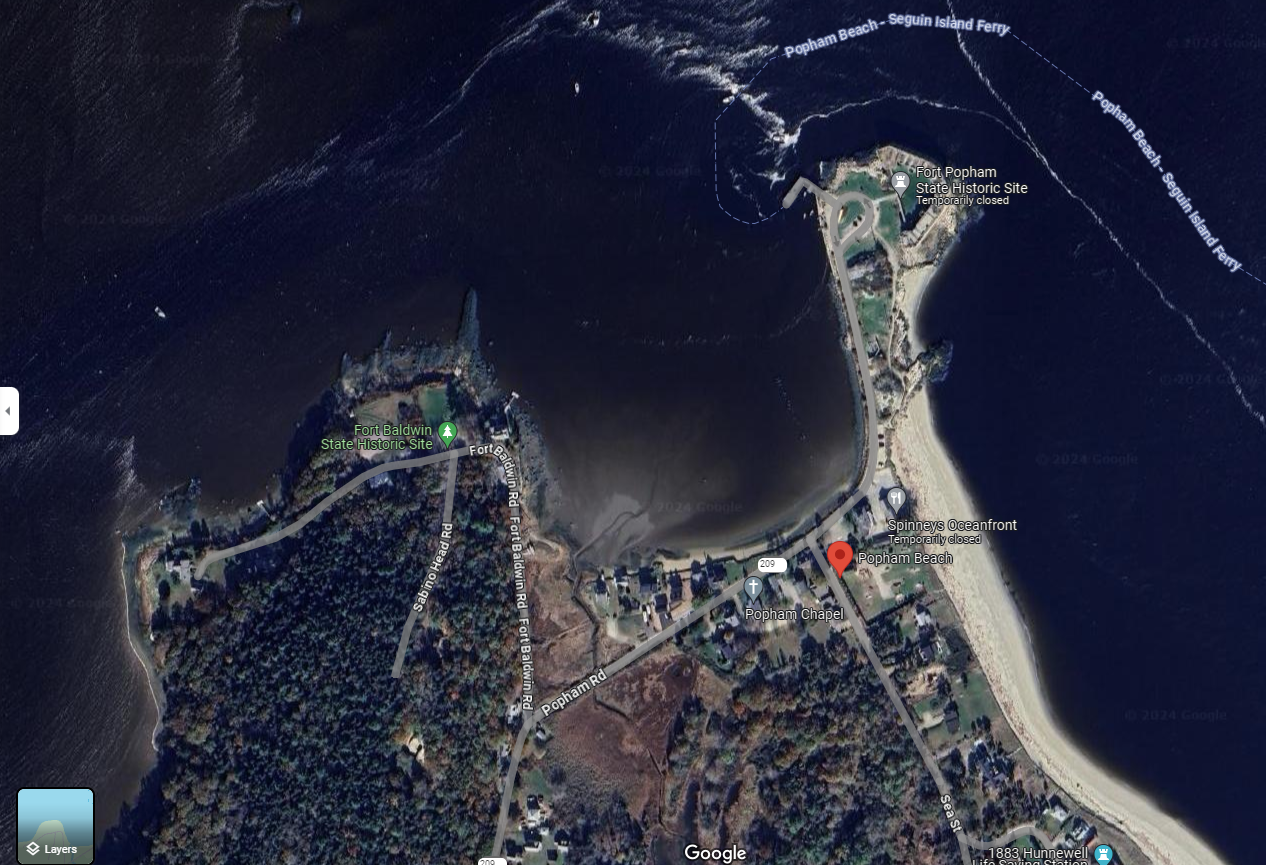
Modern satellite image from Google - Feb 2024
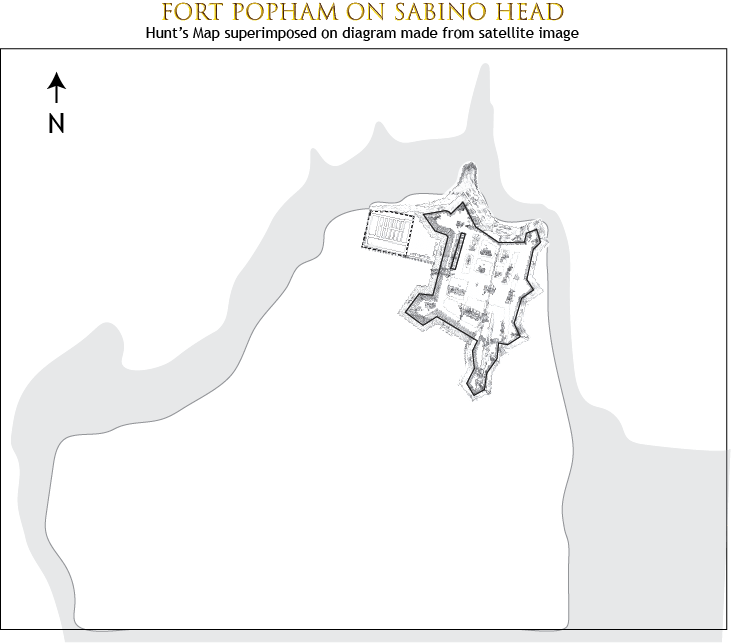
What Happened at the Colony?
The sibling rivalry between Jamestown and her sister Popham did not last long. They arrived on the Sagadahoc River in August 1607.Students compare features of the two sites:
- Jamestown: low ground
- Popham: high ground
- Jamestown: marshy, brackish water that killed
- Popham: a fresh water supply right through the fort
- Jamestown: in the middle of the powerful Powhatan confederacy
- Popham: land that was not contested
- Jamestown: 90% death rate in 3 years
- Popham: only one death (their older leader who was in poor health
Student Activity
Students take a list of features and events from both colonies and decide which were advantages and which were disadvantages.Which colony would you chose?
Which colony was more successful?
The End of Popham
In spite of the greater advantages, the little sister lost the contest.When the original ships carrying the settlers to Popham got ready to leave in December 1607, half the settlers decided to go with them. They discovered it was a bit cold in the land we now call New England. In contrast, the Jamestowners were well situated in their fort, but that month Captain John Smith had been captured by the Powhatan tribe. When he got back in January, they decided to hang him.
The Popham people, we can be happy to say, weren't quite so eager to kill their leaders as the blood-thirsty gang to the south. But, their leader died of natural causes a few months later in February anyway.
Popham's first supply arrived in May 1608, just a few months after Jamestown's first supply. With it came the news that the major financial investor of their colony had also died.
Popham's second supply arrived in September 1608, about the same time as Jamestown's second supply.
- Jamestown - Gifts for the leader Powhatan and a letter to the colonists to quit being lazy.
- Popham - News that their second in command, Raleigh, had inherited his wealthy brother's estate.
- Jamestown's Response - An infuriated John Smith sends out a condemning letter back to the Virginia Company; his letter is known as the "rude letter."
- Popham's Response
- Gilbert Raleigh's: "Yeah, I'm rich! I'm outta here!"
- Everyone else: "We're coming with you."
Needless to say, neither the investors in the Virginia Company of London OR the Virginia Company of Plymouth were pleased with the results when the second supplies of both colonies arrived back in England.
How did all those settlers get on board the ship that wasn't planning to bring them back? Here's the cool part. The men at Popham hadn't been lazy during their 12 months. They had built their own ship, The Virginia, which was sea-worthy enough and got them home.
While this was the end of the Popham Colony, it was NOT the end for the Virginia which earned herself a place in the footnotes of history.
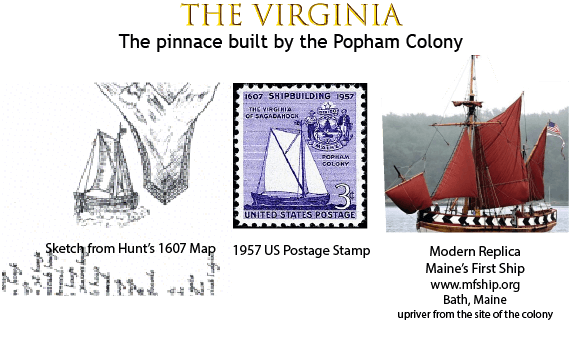
The Site of Popham Colony Today
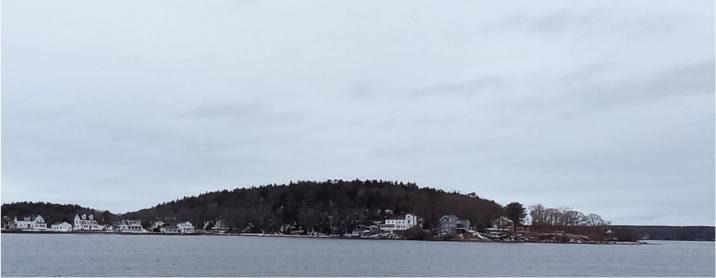
Looking westward from peninsula on the east
North is to the right.
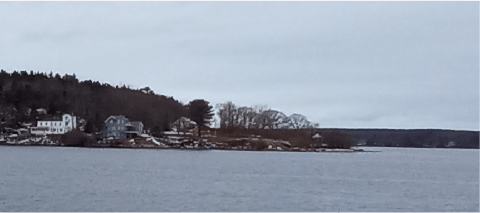
Same picture closer to the fort site
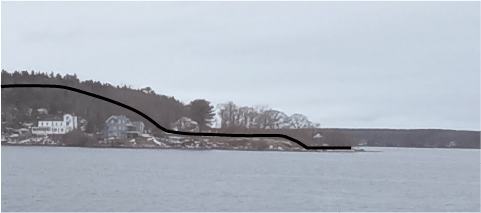
Black lines show geologic contour of the land
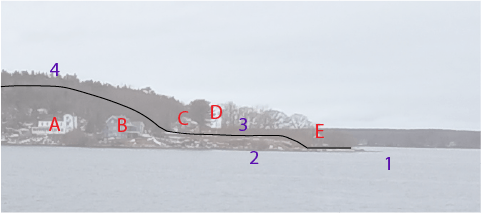
Current and Previous Features of Popham Site
See diagram below
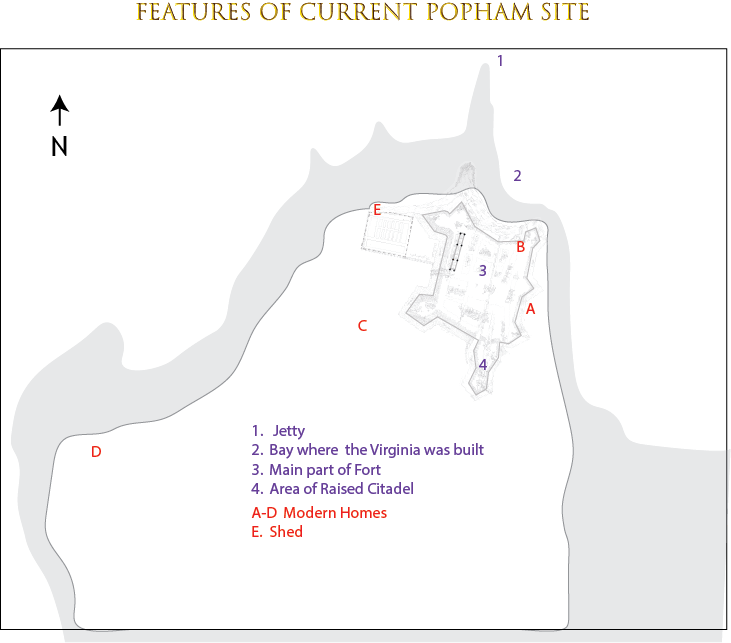
The site of features on previous picture is superimposed on John Hunt's map
Student Activities in the Unit Study
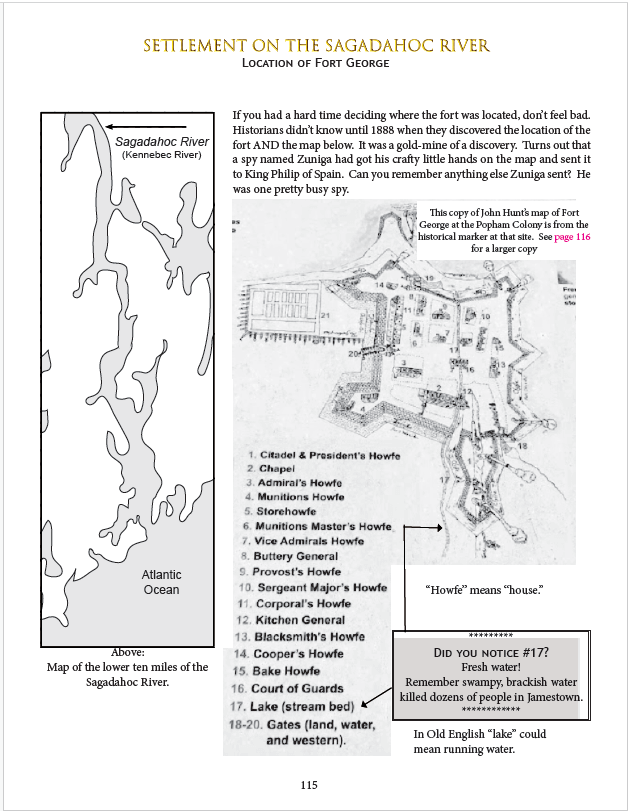
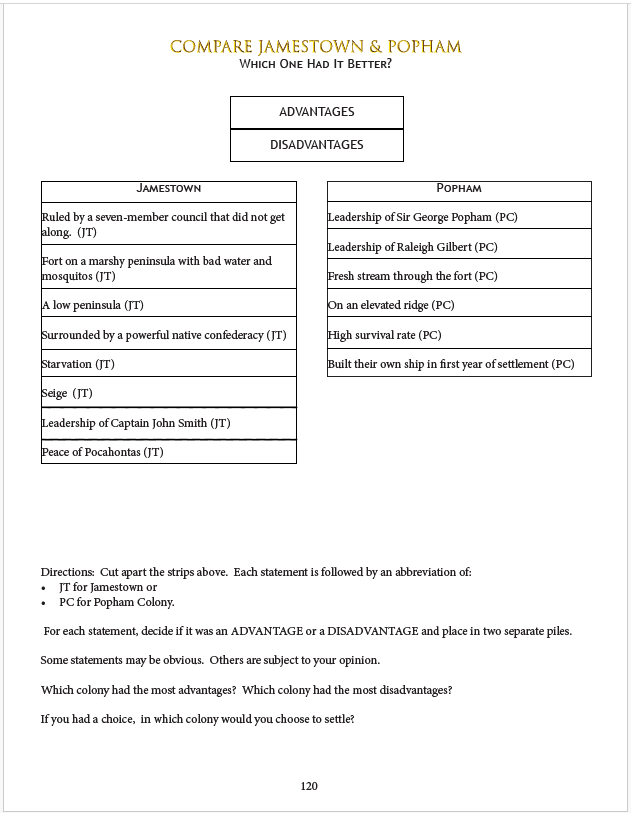
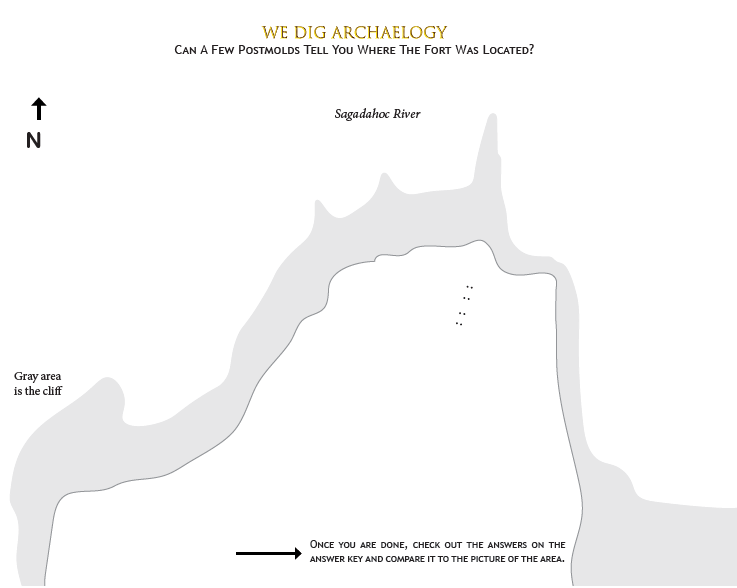
Why Is the Forgotten Fort Considered Important Now?
The rotting wood of Popham's fort walls lay quietly beneath the snows of time, if not beneath the sands of time. Meanwhile, Jamestown did not exactly flourish, but it at least survived. Until it didn't. It's location was also lost until archaeologists carefully sifted through the layers.But while the Sagadahoc's location was missing, Jamestown at least made it into the textbooks. Jamestown was remembered; Popham was forgotten.
With the discovery of John Hunt's map in the 1880's, there was a renewed interest in Popham Colony. It too, has lessons for students of history.
Shipbuilding
The Virginia was the most tangible production of the colony. It demonstrated to investors in England the true potential of the new world was not silver or gold. New England became a ship-building center of the world.Later Ventures
While they did not stay long, the settlers from Popham had information to share. Unlike the Jamestown settlers (most of whom died), those planning future ventures could consult with those who had left Popham about real-world conditions. It is no accident that the next group to try to settle New England steered south of Maine.Historical Archaeology
Popham has provided a rich field of research for the newer branch of history called Historical Archaeology. Compared to traditional archaeology which is limited to artifacts of communities without written records, historical archaeology compares written documents with archaeological artifacts. The emergence of Hunt's map is an excellent example. The plans documented by Hunt can be compared and contrasted with the building footprints left in the soil. Since the Popham colonists were there for such a short-time, archaeology has been able to piece together part of the story of how instructions and plans produced the first steps of colonization that required on-site modifications. Such comparison is not possible at Jamestown, where buildings were burnt, collapsed, torn-down and rebuilt over two decades, and then buried under almost 400 years of on-site activity.Another Look At Jamestown
Popham gives us something else: another look at Jamestown. Jamestown has earned some disrespect as a faulty start with dumb mistakes on top of bad luck. Popham Colony provides another perspective and how hard it was to start a settlement. The cost was higher than those soldiers and adventurers were willing to pay.Get the Early Settlers Unit Study
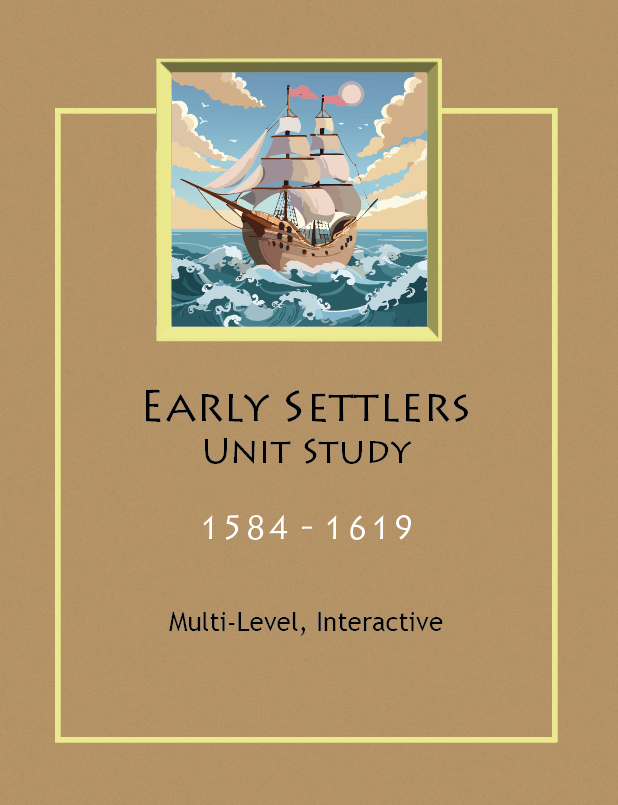
Available in Paperback OR Printable Download
199 pages (Includes Student Pages, Teacher Key, Schedule, Maps, Activities, and More)
Print It Now
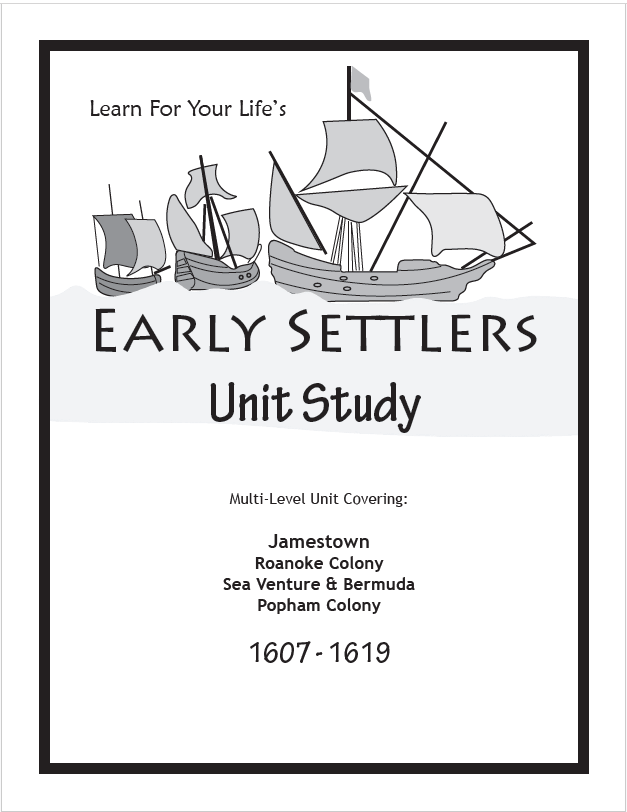
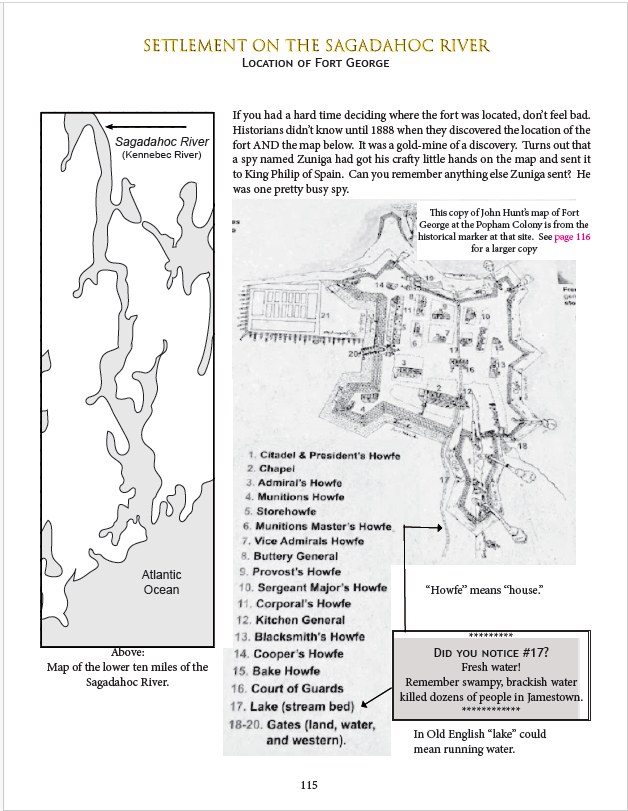
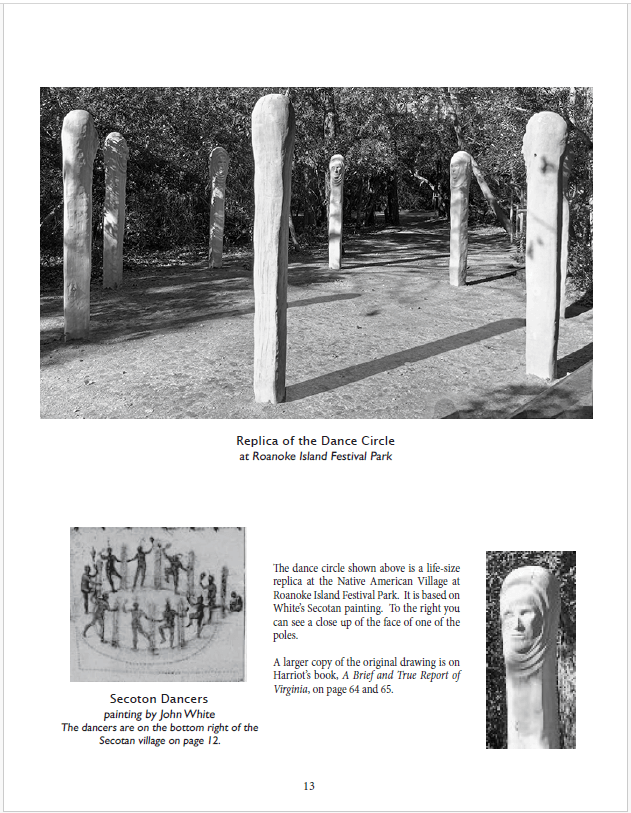
Student and Teacher's Material Included
$5.99 Download - 199 pages
![]()
Softcover Edition - Mailed to You
The same pages are in the softcover book and the printable file. Bound copy is great for repeat use or co-op leaders.
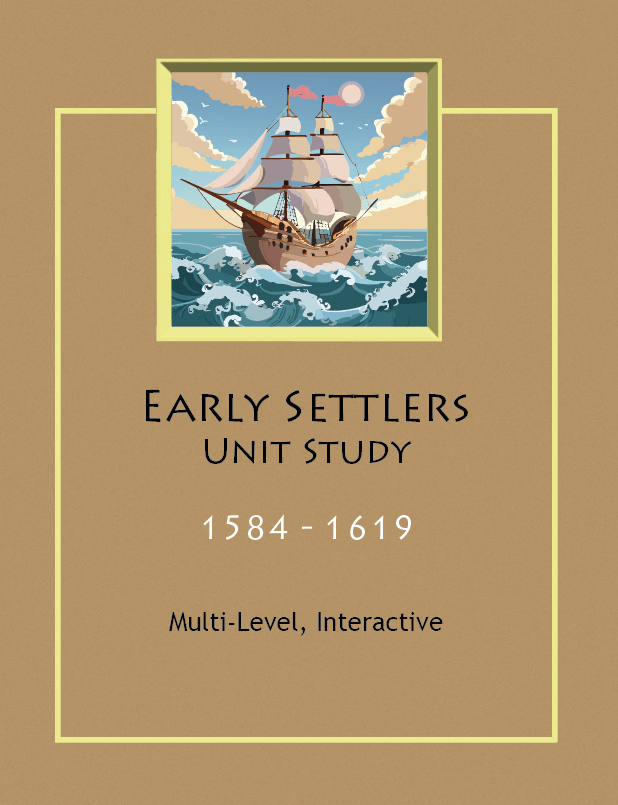
![]()
16.95 Soft Cover Manual
199 pages
Mailed to You
Early Settlers Pages
Check out our other pages for the Early Settlers Unit Study
Get the Lion To Guard Us Unit Study
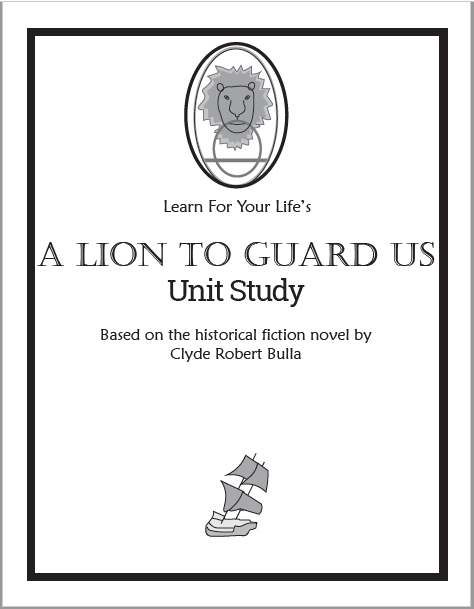
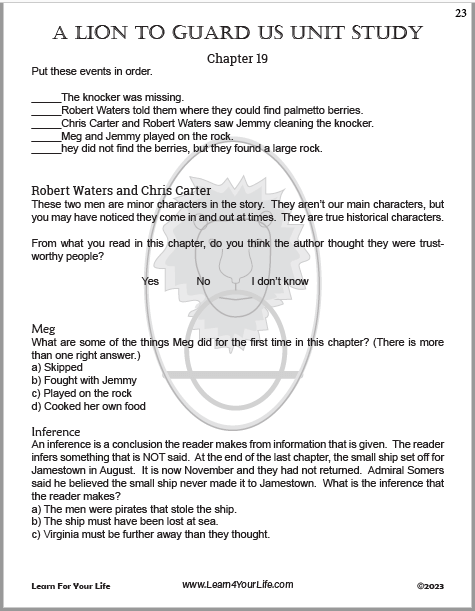
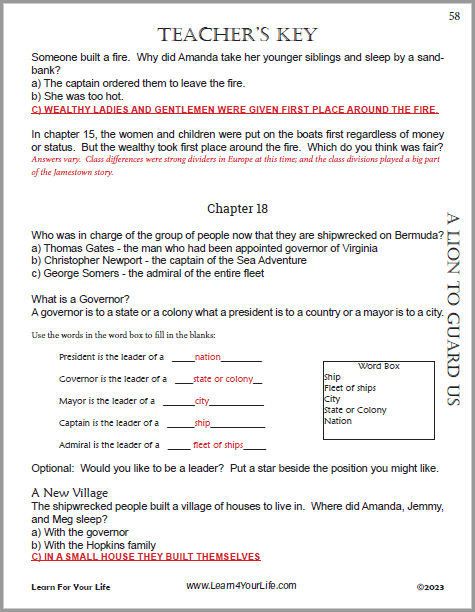
Student Guide AND Teacher's Answer Key Included
$2.99 Download - 78 pages
![]()
Our pages for A Lion To Guard Us
Clyde Bulla's Historical Fiction of Jamestown & the Sea Venture

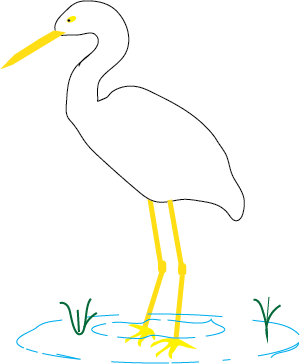
About Our Site
Hands-On Learning


